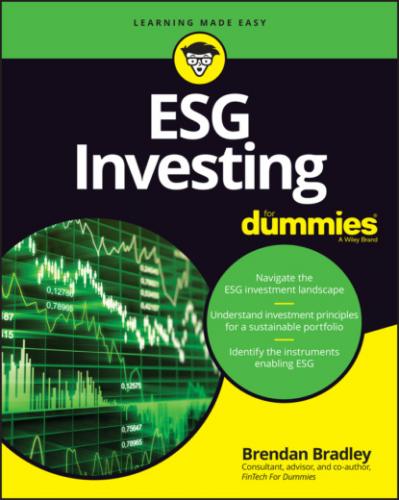Surveying Specific ESG Ratings and Metrics
Identify the most material ESG risks and opportunities that a company and its industry are facing. (I cover materiality earlier in this chapter.)
Quantify how exposed a company is to those key risks and opportunities.
Determine how well a company is managing the key risks and opportunities.
Conclude what the overall picture for a company is and how it compares to similar companies within its sector or geographical region.
This allows an objective consideration of any negative externalities that companies in an industry may face, and highlights potential, unforeseen costs apparent in the mid to long term. Equally, understanding negative externalities should help emphasize ESG factors that present opportunities for companies in the mid to long term. This section highlights the metrics around ESG and hones in on some of the “good, bad, and ugly” issues relating to how data is applied. Chapter 14 has even more information on ratings and metrics.
Data quality, ratings bias, and standardization
ESG ratings are still evolving. Keep in mind that they rely on limited and sometimes misleading disclosures by companies, which themselves are learning the ropes as to how they should report their ESG exposure. So, as with traditional securities analysis, the analysis of any data can be subjective because the selection and weighting of data points is qualitative. Historically, investors have questioned the inherent bias that has been displayed by ratings agencies or the recommendations of securities analysts, and ESG ratings will face similar scrutiny as they develop further. ESG data providers generally develop their own sourcing, research, and scoring methodologies.
To be fair to the data providers, some of the differences in methodology are also due to the different priorities of their customers — the asset managers and asset owners that subscribe to their services — who have different investment objectives. This exacerbates the difficulties in standardizing an approach.
Issues with ESG scoring
ESG data providers perform a significant part of the investment procedure by collecting and assessing information about companies’ ESG practices and scoring them appropriately. The expansion of these ratings systems has helped to encourage the growth of ESG investing by providing asset owners and managers with an alternative to managing such widespread due diligence themselves. There are more than 100 ESG data providers, which include well-known suppliers such as Bloomberg, FTSE, MSCI, Sustainalytics, Refinitiv, and Vigeo Eiris, as well as focused data providers such as S&P’s Trucost (providing carbon and “brown revenue” data) and ISS (corporate governance, climate, and responsible investing solutions). Investors increasingly view material ESG factors as being essential drivers of a company’s capacity to produce sustainable long-term performance. In turn, ESG data is growing in importance for investors’ ability to assign capital effectively.
Quality data has always been the lifeblood of investment analysis. While “quality” can be expressed in different ways, most investors agree that consistency and comparability in the accessibility of data among companies are critical elements of an operational data set. However, the current environment imposes barriers to realizing such quality when a company’s ESG data practices are rather ad hoc. Associations and regulators don’t always require companies to report on all of their ESG data; therefore, they can decide which ESG factors are material to their business performance and what information to reveal to investors. As such, asset owners and investment managers can be left to find their own solutions to these challenges, which can create an additional stream of inconsistent, non-comparable, and less material information.
ESG momentum importance
In addition to considering current ESG ratings, investors looking for positive alpha generation within an ESG framework can seek changes in ESG ratings. This is known as ESG momentum, and various studies have shown that using this strategy helps outperform the established benchmarks. Positive ESG rating momentum is defined as when a company’s ESG rating has improved by more than 10 percent on the previous year. On the contrary, negative ESG rating momentum occurs when a company’s ESG rating has fallen by more than 10 percent on the previous year, and neutral momentum occurs when the rating remains unchanged or within the –10 to +10 percent range.
The principle behind an ESG momentum strategy is that future stock performance is connected to a change in the ESG quality of the company and potentially a reduction in future liabilities. Various studies have shown that buying more stocks with improving ESG ratings can lead to investment outperformance. The premise of this idea is that companies with lower ESG scores have more improvement potential and should therefore be included in a fund’s investment universe, although this does introduce timing issues on when the optimal time is to invest in such stocks. However, this is no different from the challenges facing active fund managers within a traditional investment approach.
Applying artificial intelligence and data science to ESG analysis
Several investors mention the lack of high-quality
